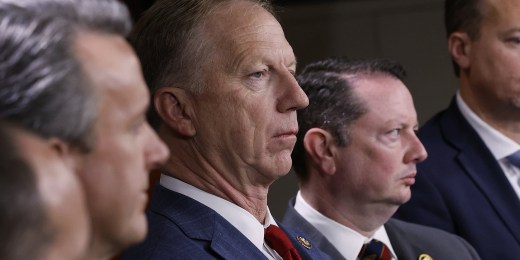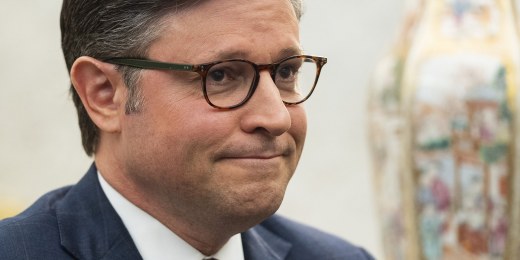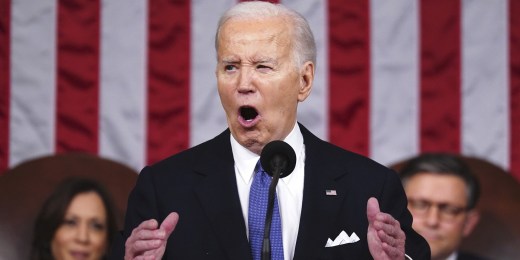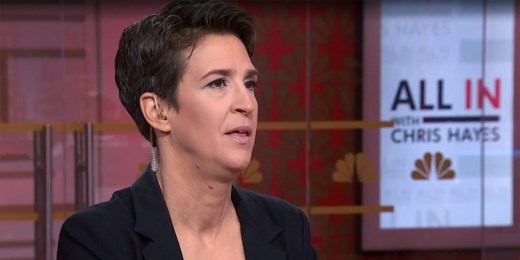Article content
City council is getting serious about social media.
‘We’re elected representatives, but we have to play by the same rules’


City council is getting serious about social media.
During Tuesday’s council meeting, Ward 1 Coun. Mark Signoretti and Ward 6 Coun. Rene Lapierre introduced a motion to have staff develop a report that will guide the way forward on a social media policy for councillors.
As they noted, “social media is a prevalent form of communication for many elected officials;” however, there is currently no policy in place to guide councillors.
As a result, there is a lack of consistency and confusion around proper protocol – not all members of council maintain a presence on social media and those who do use the tools in different ways.
The two councillors introduced the motion to encourage “openness, transparency and proper conduct” from their peers.
In their motion, Signoretti and Lapierre asked that council direct staff to develop a report, to be presented during the second quarter of 2022, “with recommendations for a social media policy for members of council and local boards.”
Lapierre said the motion simply asks staff to develop a report for more information. He said his intention was to direct staff to go out and find the required information, and then to report back to council. It will be councillors who will mold the final policy, Lapierre said.
Signoretti said the policy would level the playing field.
“We’re elected representatives, but we have to play by the same rules,” he said. “We all get comments from constituents that may not be favourable or may seem unfair, but we put ourselves in this position. You take the good, the bad and the ugly.”
Signoretti said a policy would ensure council members are not abusing the power of social media or misrepresenting themselves while online.
Eric Labelle, the city solicitor, said were a policy to be developed, it would be an appendix of the Code of Conduct and would be overseen by Robert Swayze, the city’s integrity commissioner.
Swayze has weighed in previously regarding the use of social media by Greater Sudbury councillors. He has recommended twice Ward 5 Coun. Robert Kirwan be reprimanded for his behaviour online; council agreed both times and issued the reprimands.
Most recently, it was discovered Kirwan and his wife, Valerie, were using a fake Facebook account under the name Jessie Timmons to administer their Valley East group, which boasts more than 18,000 members, and to engage members. They had not made it clear Jessie Timmons was an extension of the Kirwan household.
In 2019, Swayze delivered a report to council in which he said Kirwan had gone too far over the line of acceptability. He pointed to three specific statements Kirwan made in the Valley East group – one against David Robinson, an economics professor at Laurentian University; another against Tom Price, an adviser to Ward 2 Coun. Michael Vagnini and an outspoken critic of many city decisions; and a third against an unnamed individual who participated in the Greater Sudbury Politics Facebook group. Swayze accused the councillor of being rude and harassing towards the three individuals.
It is also known that Kirwan has profited financially from the Valley East group. Ward 3 Coun. Gerry Montpellier also commented on Tuesday that he maintains Facebook pages for his various enterprises, which include maritime surveying and appraisal, motor sports and fancy cars.
While Signoretti and Lapierre said they do not have a problem with councillors earning money from social media, both said they should not marry the personal and political.
“When the content of that social media relies on their councillor’s position, it has crossed into a grey zone,” Signoretti said in October, when the motion was first added to the meeting agenda. “We need to eliminate that grey zone by not allowing councillors to post content about their positions on sites from which they profit.”
Ward 4 Coun. Geoff McCausland wondered whether social media pages should belong to the city. That would allow the group or page to continue after the official leaves politics and it would put “banning and blocking” into the hands of city staff – “based on clear guidelines,” McCausland said. Staff may also be more neutral than an elected representative.
“This is about setting a standard we can all adhere to so that we don’t have ambiguous rules,” McCausland said, noting social media sites are often mired in chaos and misinformation. “This is about making sure we can engage with our constituents without needing to be social media managers.”
Councillors passed the motion by a vote of 12-1.
mkkeown@postmedia.com
Twitter: @marykkeown
Facebook: @mkkeown


A top psychology group is urging technology companies and legislators to take greater steps to protect adolescents’ mental health, arguing that social media platforms are built for adults and are “not inherently suitable for youth.”
Social media features such as endless scrolling and push notifications are “particularly risky” to young people, whose developing brains are less able to disengage from addictive experiences and are more sensitive to distractions, the American Psychological Association wrote in a report released Tuesday.
But age restrictions on social media platforms alone don’t fully address the dangers, especially since many kids easily find workarounds to such limits. Instead, social media companies need to make fundamental design changes, the group said in its report.
“The platforms seem to be designed to keep kids engaged for as long as possible, to keep them on there. And kids are just not able to resist those impulses as effectively as adults,” APA chief science officer Mitch Prinstein said in a phone interview. He added that more than half of teens report at least one symptom of clinical dependency on social media.
“The fact that this is interfering with their in-person interactions, their time when they should be doing schoolwork, and — most importantly — their sleep has really important implications,” Prinstein said.
The report did not offer specific changes that social media companies can implement. Prinstein suggested one option could be to change the default experience of social media accounts for children, with functions such as endless scrolling or alerts shut off.
The report comes nearly a year after the APA issued a landmark health advisory on social media use in adolescence, which acknowledged that social media can be beneficial when it connects young people with peers who experience similar types of adversity offline. The advisory urged social media platforms to minimize adolescents’ online exposure to cyberbullying and cyberhate, among other recommendations.
But technology companies have made “few meaningful changes” since the advisory was released last May, the APA report said, and no federal policies have been adopted.
A spokesperson for Meta, the parent company of Facebook, Instagram and WhatsApp, disputed the assertion that there have not been changes instituted on its platforms recently. In the last year, Meta has begun showing teens a notification when they spend 20 minutes on Facebook and has added parental supervision tools that allow parents to schedule breaks from Facebook for their teens, according to a list of Meta resources for parents and teenagers. Meta also began hiding more results in Instagram’s search tool related to suicide, self-harm and eating disorders, and launched nighttime “nudges” that encourage teens to close the app when it’s late.
Prinstein said more is still needed.
“Although some platforms have experimented with modest changes, it is not enough to ensure children are safe,” he said.
TikTok and X, formerly known as Twitter, did not immediately respond to a request for comment.
Tuesday’s report comes amid broader concern over the effects of social media on young people. In March, Florida passed a law prohibiting children younger than 14 from having social media accounts and requiring parental consent for those ages 14 and 15. California lawmakers have introduced a bill to protect minors from social media addiction. Dozens of states have sued Meta for what they say are deceptive features that harm children’s and teens’ mental health.
And last month, a book was published by social psychologist Jonathan Haidt that argues that smartphones and social media have created a “phone-based childhood,” sending adolescents’ rates of anxiety, depression and self-harm skyrocketing.
The book, “The Anxious Generation: How the Great Rewiring of Childhood Is Causing an Epidemic of Mental Illness,” has been hotly debated. While it has its detractors, it instantly became a bestseller.
Prinstein said that it’s up to technology companies to protect their youngest users, but parents can also help. He recommended all devices in a family’s household go on top of the refrigerator at 9 p.m. each night to help kids — and parents — get the amount of sleep they need. He also said there is no harm in limiting or postponing a child’s use of social media.
“We have no data to suggest that kids suffer negative consequences if they delay social media use, or if their parents set it for half an hour a day, or an hour a day,” he said.
“If anything, kids tell us, anecdotally, that they like to be able to blame it on their parents and say, ‘Sorry, my parents won’t let me stay on for more than an hour, so I have to get off,’” he added. “It kind of gives them a relief.”
IE 11 is not supported. For an optimal experience visit our site on another browser.


Now Playing



06:15
UP NEXT



11:59



07:23



04:23



09:17



10:58


04:59


07:59


11:59


07:18


04:25


08:19


03:54


04:22


11:46


03:13


10:39


10:43


08:37


08:26
Now Playing



06:15
UP NEXT



11:59



07:23



04:23



09:17



10:58


Name: The boomer pause.
Age: A split second.
Appearance: An uncomfortably long break.
Does it refer to an entitled pause between statements to show that you, a boomer, own the room? Not quite: it refers to that awkward moment of silence between hitting “record” and speaking that boomers leave when they film their social media posts.
I’m not sure I understand. It’s like the millennial pause, but longer.
Wait – the millennial pause? A term, coined in 2021, for the telltale split-second pause millennials leave before speaking, because they came of age before TikTok.
And the boomer pause is longer, because boomers are even older? Exactly. Like a long pause before and after speaking.
So it’s a pause indicating age-related technological ineptitude? It’s more than that.
With an added note of self-satisfied indifference about how you come across? That’s part of it, I guess.
And a studied refusal to get to grips with even the most basic and user-friendly editing features? It’s just being a boomer, really.
Would you happen to have a popular example of the phenomenon to hand? Yes: Gary Barlow.
From Take That? That’s the one. On the TikTok account of his wine range, Barlow recently filmed himself grinning in front of a vineyard.
Gary Barlow has a wine range? Keep up. The clip, which has since gone viral, may be transcribed thus: (IMMENSE PAUSE). Barlow: “This is my idea of a very nice day out.” (SECOND IMMENSE PAUSE). End of video.
A boomer pause? “I thought my phone had frozen” was one of the many comments below the post.
Maybe he’s inserting a deliberate pause to … To what?
… to capture your attention. TikTok doesn’t work like that, grandad.
Anyway, I hate to break it to you, but Gary Barlow isn’t a boomer. Are you kidding? He has his own wine range, and homes worth millions in London, Oxfordshire and Santa Monica.
Barlow was born in 1971. The generally acknowledged boomer cutoff is 1964. He is technically Gen X. The boomer pause is down to the length of the gap, not the age of the pauser.
So Kylie Jenner could leave a boomer pause? She could, but she wouldn’t.
Do say: (After counting to five slowly in your head) “Hi, everybody!”
Don’t say: “I am pushing the button! It just keeps flashing this … oops, I think we’re on. Hi, everybody!”
DJT Stock Plunges After Trump Media Files to Issue Shares
FFAW, ASP Pleased With Resumption of Crab Fishery – VOCM
Marjorie Taylor Greene won’t say what happened to her Trump Media stock
Javier Blas 10 Things Oil Traders Need to Know About Iran's Attack on Israel – OilPrice.com




In cutting out politics, A24 movie 'Civil War' fails viewers – Los Angeles Times
Tesla May Be Headed For Massive Layoffs As Woes Mount: Reports – InsideEVs
Trump Media plunges amid plan to issue more shares. It's lost $7 billion in value since its peak. – CBS News
Trump Media stock slides again to bring it nearly 60% below its peak as euphoria fades – National Post